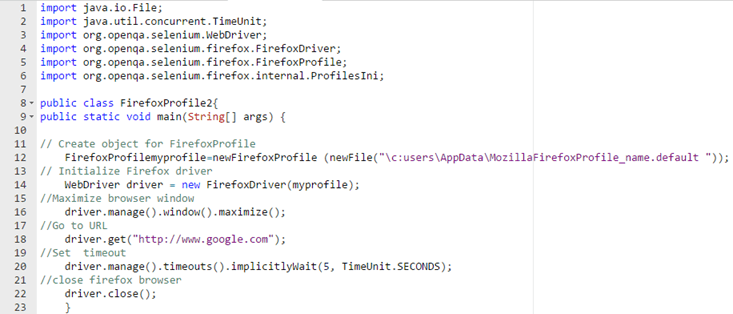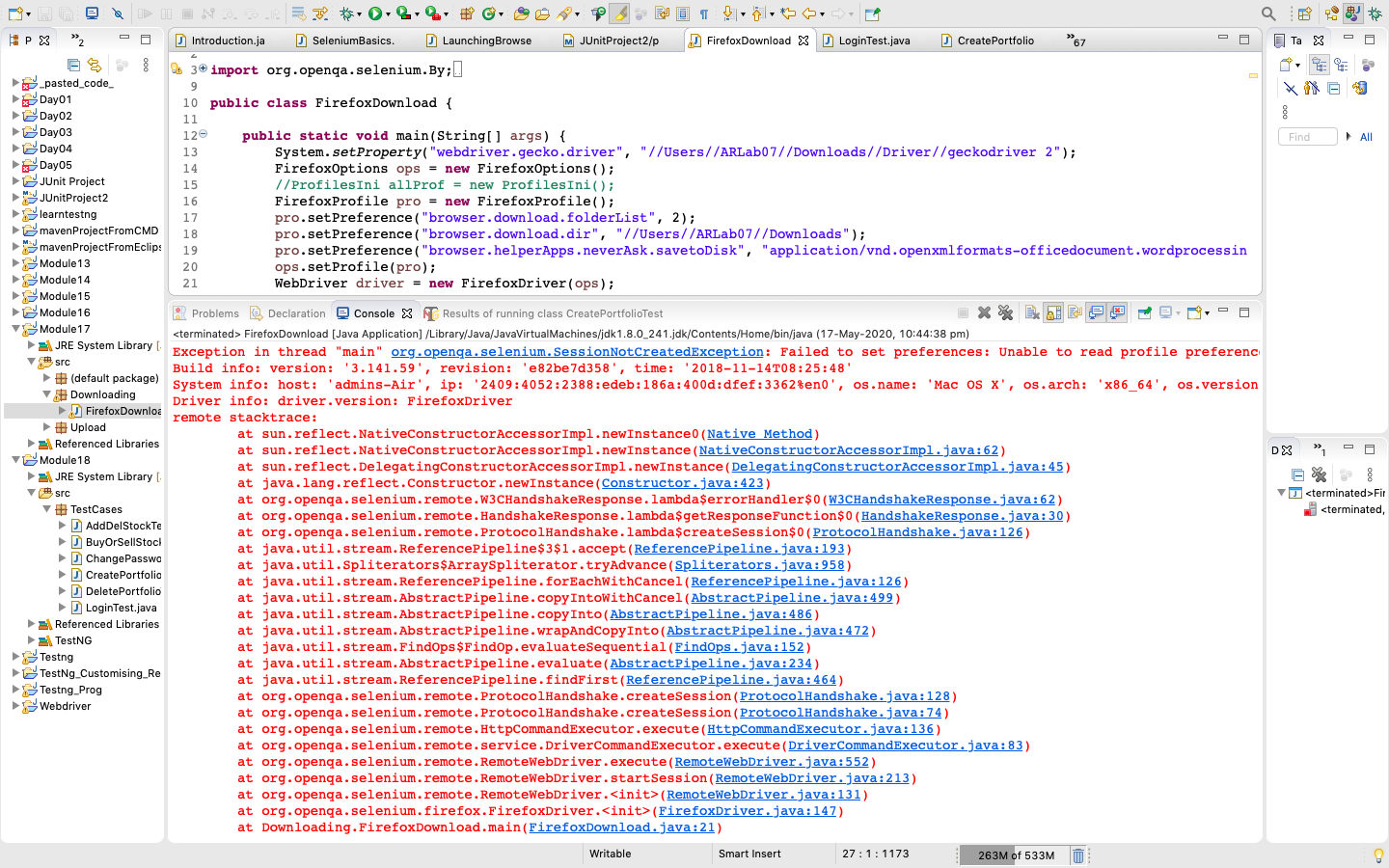However, you can use any of the latest stable version. In this tutorial, we will be using the latest Selenium 4. Additionally, you can learn to set up Selenium with Eclipse here: Configure Selenium WebDriver. How to install EdgeDriver on Windows? Once we are done with all the prerequisites downloads and setups, we are ready to move ahead. How to do automation in MAC using Selenium and Gecko Driver Using Maven Project. Configure Geckodriver Firefox for Selenium webdriver on MAC and Window. Selenium WebDriver Eclipse Java.
setting up Eclipse IDE for selenium webdriver and writing the simple script in the Java class. In this tutorial, you will learn in detail writing selenium webdriver script in Java using Eclipse IDE. Here, we are also discussing how to write selenium webdriver script for automating different browsers like Chrome, Firefox, IE etc. using most of the common selenium webdriver commands.How To Firefox Driver For Selenium On Mac Using Eclipse Tutorial
Table of Contents
Selenium Webdriver Script in Java

- Launch eclipse using eclipse.exe. Select the workspace where you would want to save the projects. Create a new java project in the eclipse. Create a new java class within the project. Configure the eclipse by importing jars files for Java Client Drivers.
- It is a proxy which is used to interact with the browsers that run on Gecko-based browsers like Firefox. Gecko driver is the link between your tests in Selenium WebDriver and Mozilla Firefox browser. As Selenium 3.0 will not have any native implementation of Firefox, we need to direct all the driver commands through Gecko Driver.
Following is the sample selenium webdriver script written in Java that uses most common selenium webdriver commands. It will load the URL “https://www.siteforinfotech.com” on the chrome browser, navigates to “Contact Us” page, fills the fields of the forms and submit it, then refreshes the page and go back to the previous page.
You can copy the code and paste it to run on the Java class that you have created with the help of the previous post written
Following is the quick introduction of the selenium webdriver scripts used on the Java class written above.
The first block of the codes started with import keyword will import required packages to the class. These packages will instantiate a new browser which will load required drivers.
The “driver.get()” command used just below the driver object opens the provided URL on the google chrome browser. The “driver.getTitle()” command retrieves the actual title of the page and “contentEquals()” method will compare with the expected title in order to verify the title of the page.

I have written “driver.findElement(By.linkText(“Contact Us”)).click();” command to find out the desired link and execute the click() command on it. “findElement(By.name())” method wil find the desired elements by name and “sendkeys()” fills the input field.
The command “driver.manage().timeouts().implicitlyWait(10, TimeUnit.SECONDS);” holds the testing process for 10 seconds. “navigate().refresh()” and “navigate().back()” are the browser navigation commands that refreshes and return back to the previous page. The last command “driver.close();” closes the browser opened by the webdriver.
Refer to our next post about the selenium webdriver commands to get more information about most commonly used selenium webdriver commands.
Running The Script for Firefox
In order to run the selenium webdriver script for Firefox browser, you have to add or replace the following codes.
Import the Firefox driver on the import block for automating the webpage on Firefox browser. Use the following line of code for importing the Firefox driver.
How To Firefox Driver For Selenium On Mac Using Eclipse Version
For the latest version of Firefox, you need to use gecko driver created by Mozilla. It should be used before instantiating driver object. For this down the gecko driver from GitHub and extract the compressed “.zip” file on any location of your drive i.e. “E:geckdriver.exe“. Now use this driver file with “System.setproperty()” method as given below.
Running the Script for IE
Same as running the selenium webdriver script for Firefox browser, you can run the script for IE also with making little change on the following lines of codes from the Java class given above.
At first, import the Internet Explorer driver server on the import block for automating the webpage on IE browser. Use the following line of code for importing the Internet Explorer driver server.
Now, download the Internet Explorer driver server file from the selenium website as shown on the image below. The driver server files are available for both 32-bit windows and 64-bit windows.
Now extract the compressed “.zip” file on any location of your drive i.e. “E:IEDriverServer.exe” and use the extracted driver file with “System.setProperty()” method as given below.
When there was an error while running the selenium webdriver script on the IE browser, verify the following settings on internet options security.

For this, go to IE toolbar, click
Read Next: Selenium Webdriver Commands Required for Automated Testing